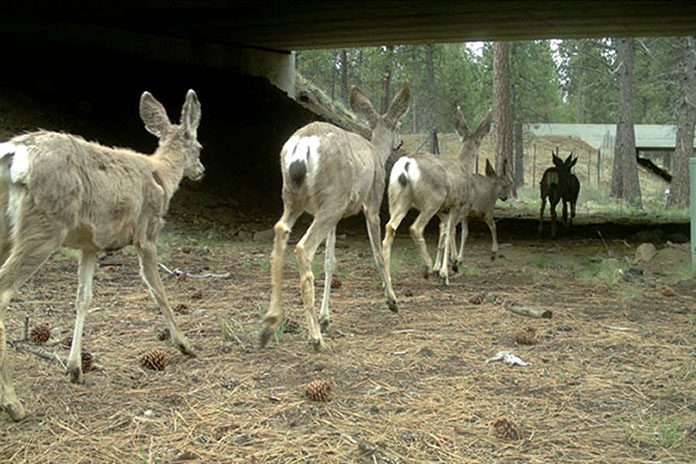
Late September marks the beginning of the migration period for deer and elk, which must cross major highways as they head towards wintering grounds.
Between 2007-2017, the Oregon Department of Transportation documented 12,540 animal-vehicle collisions, including deer and elk. The actual number of collisions is higher, as many are not reported if there is minimal damage or no human injuries.
Collisions with deer and elk tend to peak in October and November, when migration and breeding (the “rut”) puts them on the move, making them more likely to cross roads.
The Oregon Department of Fish & Wildlife is asking Oregonians to watch out for wildlife by being aware of the following:
- The deer breeding season typically lasts from late October to late November, increasing deer activity and the potential for deer to cross roads.
- During the next few months there will be fewer daylight hours and visibility will be challenged by darkness and winter weather conditions.
- Be attentive at all times, especially sunset to sunrise for any potential hazard on or near the highway.
- When driving in areas that have special signs indicating the possible presence of wildlife, please use extra caution. These signs are posted for a reason.
- Be cautious in areas with dense vegetation along the road or while going around curves. Wildlife near the road may not be visible.
- If you see one animal, stay alert for others nearby.
- When wildlife are near or on the roadway, reduce your speed and stay in your lane. Many serious crashes are the result of drivers losing control as they swerve to avoid wildlife.
- The same advice applies for smaller wildlife like raccoons – try to stay in your lane and do not swerve for these animals. They are less dangerous to vehicles than big game animals; losing control of the vehicle is a larger concern.
- Always wear your seat belt, even the slightest collision could result in serious injuries.
Highway 97 south of Bend is a hot spot for wildlife vehicle collisions as it runs through a historical deer migration route. ODOT has worked with ODFW, the Rocky Mountain Elk Foundation, Oregon Hunters Association and others to build wildlife crossings that allow wildlife to safety cross over or under this busy highway. Currently there are two undercrossings near Sunriver that have reduced wildlife vehicle collisions by 90 percent since 2012. To the south, a third undercrossing is under construction north of Gilchrist and more are planned in central Oregon.
Dedicated funds are critical for implementing projects to support safe wildlife migration. The non-profit Oregon Wildlife Foundation (OWF) is currently selling vouchers for a Watch for Wildlife license plate featuring a mule deer and Cascade Range mountain in the background. OWF has a long history of providing grants for projects that benefit fish and wildlife in Oregon, including helping rid Diamond Lake of tui chub to restore the trout fishery and supporting the Bonneville Fish Hatchery Sturgeon Viewing Pond.
Once 3,000 vouchers are sold, the DMV will put the plate into production. OWF will award the annual monies raised from license plate sales to projects that help wildlife move safely within their range and between habitat patches. Examples of projects that could be funded with Watch for Wildlife license plate proceeds include not only traditional wildlife underpasses like those on Highway 97, but others like the Harborton Frog Shuttle, an all-volunteer effort that transports threatened red-legged frogs along their migratory route across busy Hwy 30 in Northwest Portland. Visit OWF’s website for more information.








